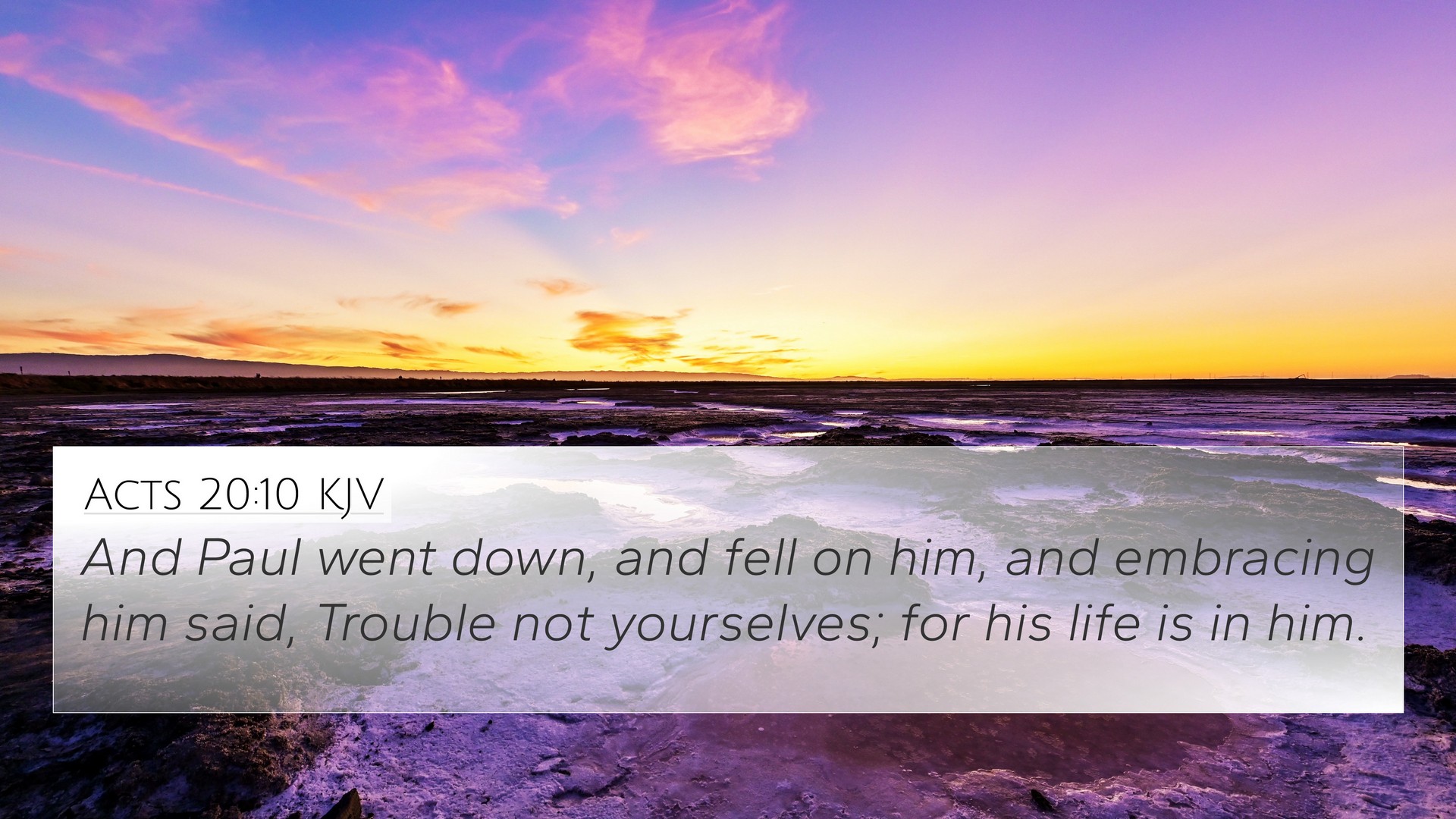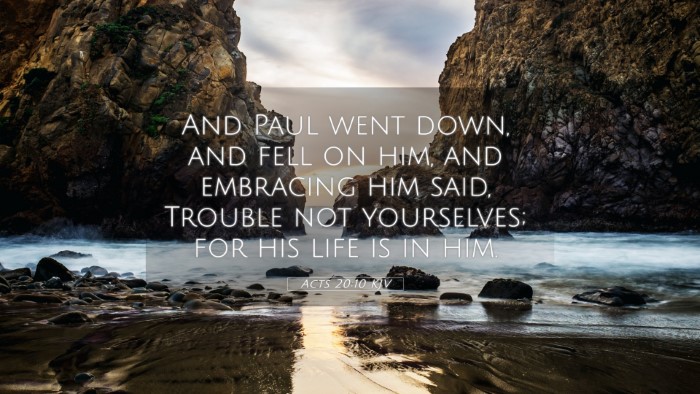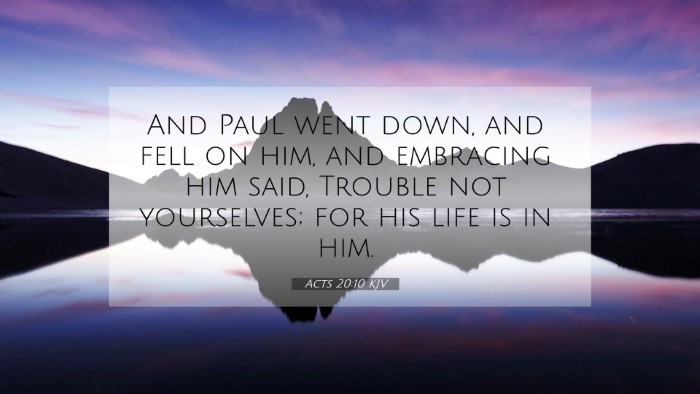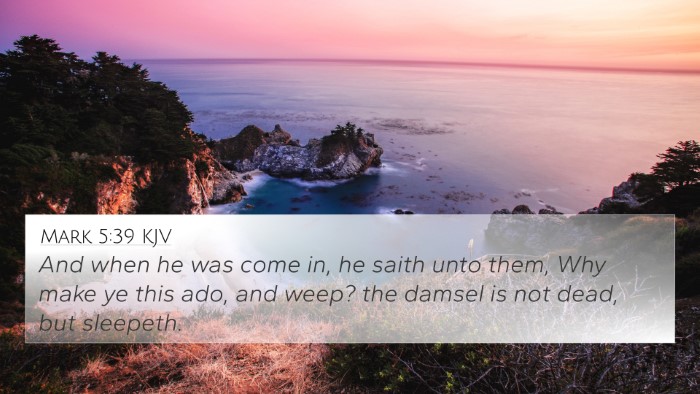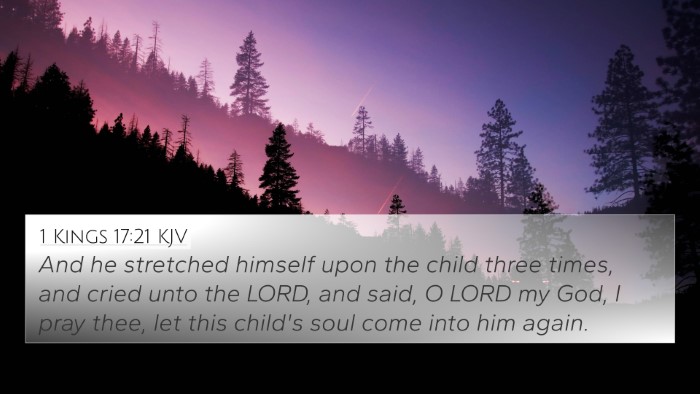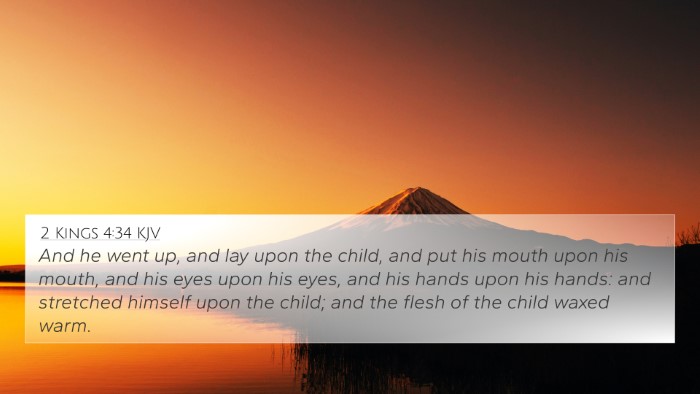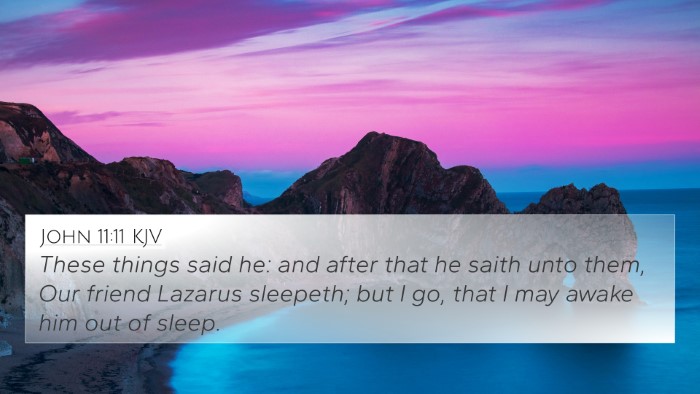Understanding Acts 20:10
Acts 20:10 states, “But Paul went down and fell on him, and embracing him said, 'Do not trouble yourselves, for his life is in him.'” This verse is significant in the context of Paul's ministry and reflects God's power to restore life.
Commentary Insights
Matthew Henry emphasizes the miraculous nature of this event, highlighting Paul's deep compassion for the young man, Eutychus. Henry notes that this incident showcases God's ability to intervene directly in the lives of believers, illustrating divine mercy and resurrection themes.
Albert Barnes provides a detailed analysis, explaining that Paul’s actions not only demonstrate a physical restoration but also symbolize the spiritual revival that God offers. He draws parallels to Old Testament miracles, noting the importance of faith in God’s power to heal.
Adam Clarke expands upon the cultural aspects of the situation. He discusses the significance of the number of lamps in the room, suggesting that the dim light symbolizes the danger of spiritual lethargy, which can lead to the "falling" of believers. Clarke also emphasizes the importance of Paul’s role as a mentor and spiritual leader.
Key Themes and Lessons
- Divine Compassion: Paul's concern for Eutychus highlights the empathetic nature of true Christian leadership.
- Miraculous Restoration: This event serves as a testament to God’s ability to bring life where there seems to be none.
- Symbolism of Falling: Eutychus’s fall may represent the spiritual pitfalls believers can encounter when they neglect their faith.
- Importance of Community: The gathering of believers emphasizes support and unity in times of crisis.
- Faith in Action: Paul’s proactive approach to the situation indicates that faith is dynamic and often requires courage.
Bible Verse Cross-References
Acts 20:10 can be cross-referenced with the following scriptures:
- 1 Kings 17:21-22 - Elijah raises the widow's son, reflecting similar themes of resurrection.
- 2 Kings 4:32-37 - Elisha raises the Shunammite woman's son, further illustrating God’s power over death.
- Mark 5:41-42 - Jesus raises Jairus’s daughter, symbolizing His authority as the giver of life.
- Luke 7:14-15 - Jesus raises the widow's son in Nain, adding to the New Testament examples of resurrection.
- John 11:43-44 - Jesus calls Lazarus out of the tomb, displaying His divine power over death.
- Romans 8:11 - The spirit that raised Jesus from the dead dwells in believers, encouraging hope in resurrection.
- 1 Corinthians 15:54-55 - The victory over death and the final resurrection promise for believers.
Application for Today
Acts 20:10 offers valuable lessons for modern believers. It encourages individuals to remain faithful and supportive in their church communities, fostering an environment of healing and restoration. The themes of compassion and divine intervention serve as reminders of God's presence in moments of desperation.
Tools for Bible Cross-Referencing
For deeper study, consider utilizing:
- Bible Concordance: A tool to find words and their occurrences throughout the scripture.
- Cross-Reference Bible Study: Methods that allow believers to explore themes and connections across different books.
- Bible Reference Resources: Comprehensive guides that help in identifying thematic links between verses.
Identifying Connections Between Bible Verses
The act of cross-referencing not only enriches personal Bible study but also enhances sermon preparation and teaching. By understanding how verses correlate and share thematic elements, believers can gain a deeper insight into Scripture’s overarching messages.
Engaging in a comparative Bible verse analysis of Acts 20:10 alongside the referenced passages can bolster one's understanding of God's active role in both the Old and New Testaments.
In summary, understanding Acts 20:10 enriches the believer's faith journey. By studying the cultural, spiritual, and miraculous aspects of this verse, one can appreciate the depth of God's interactions with humanity, fostering a faith that embraces both the frailty and resilience of life.
